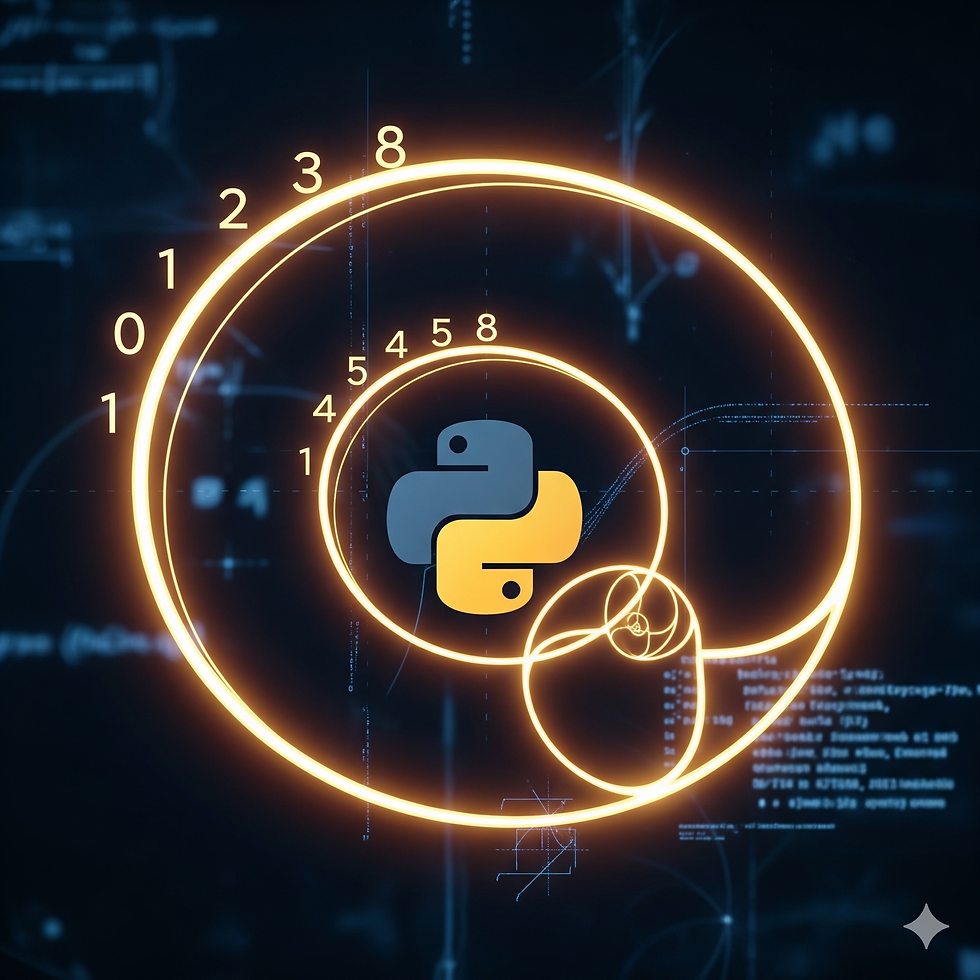Pythons Project for beginners - Post 22: Fibonacci Sequence Generator
- Anubhav Somani
- Sep 5
- 2 min read

Let's build a Fibonacci Sequence Generator. This is a classic computer science problem and a wonderful project for beginners to practice using loops and managing variables that change with each iteration.
First, here is the explanation of how the project is built.
How the "Fibonacci Sequence Generator" is Made
The Core Idea: The goal is to create a program that generates the Fibonacci sequence up to a number of terms specified by the user. The Fibonacci sequence is a series of numbers where each number is the sum of the two preceding ones. It typically starts with 0 and 1.
Understanding the Sequence: The sequence looks like this: 0, 1, 1, 2, 3, 5, 8, 13, 21, ...
The 3rd number (1) is 0 + 1.
The 4th number (2) is 1 + 1.
The 5th number (3) is 1 + 2, and so on.
Getting User Input Safely: We need to ask the user how many terms of the sequence they want to see. We'll use input() to get this number and then convert it to an integer using int(). To prevent crashes if the user enters text, we'll wrap this in a try...except ValueError block. We'll also check if the number is positive.
Initializing the First Two Numbers: To start the sequence, we need the first two numbers. We'll initialize two variables, n1 = 0 and n2 = 1. These will be our "base" numbers from which the rest of the sequence is built.
Handling Edge Cases: What if the user asks for only one term? The sequence is just "0". If they ask for two terms, it's "0, 1". We'll handle these simple cases with if statements before starting the main loop.
The Generation Loop: A for loop is the perfect way to generate the rest of the sequence. The loop will run for the number of terms the user requested, minus the first two which we handle separately.
Inside the loop, on each iteration, we:
Calculate the next term in the sequence: nth = n1 + n2.
Print the nth term.
Update the variables: This is the crucial step. The number that was n2 now becomes the new n1, and the nth term we just calculated becomes the new n2. This "shifts" our window forward, preparing for the next calculation.
Displaying the Sequence: We'll print the first two numbers, and then inside the loop, we'll print each new number. To make it look like a nice sequence, we can print them all on the same line, separated by a space.



Comments